Books
Desert Animal Adaptations

How do animals survive in some of Earth's most extreme regions? Learn about the body parts, body coverings, and behaviors that make living there possible. The four titles in this series contain full-color photographs and simple, fact-filled text that will appeal to young children who love science and animals.
Polar Animal Adaptations

How do animals survive in some of Earth's most extreme regions? Learn about the body parts, body coverings, and behaviors that make living there possible. The four titles in this series contain full-color photographs and simple, fact-filled text that will appeal to young children who love science and animals.
Ocean Animal Adaptations
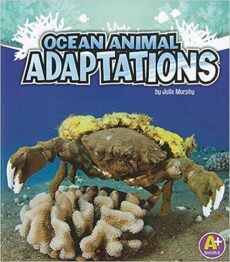
How do animals survive in some of Earth's most extreme regions? Learn about the body parts, body coverings, and behaviors that make living there possible. The four titles in this series contain full-color photographs and simple, fact-filled text that will appeal to young children who love science and animals.
Rainforest Animal Adaptations
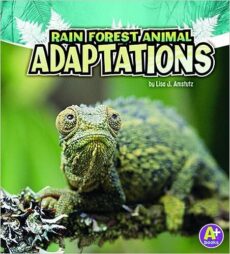
How do animals survive in some of Earth's most extreme regions? Learn about the body parts, body coverings, and behaviors that make living there possible. The four titles in this series contain full-color photographs and simple, fact-filled text that will appeal to young children who love science and animals.
What Do You Do With a Tail Like This?
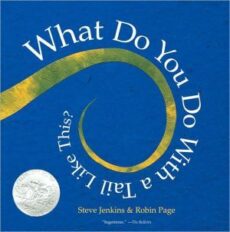
Explore the many amazing things animals do with their body parts – including ears, eyes, mouths, noses, feet, and tails -- in this Caldecott Honor book. Using a guessing format and beautiful illustrations, this interactive volume will delight young children as they learn about physical adaptations that help different animals thrive.
From the same authors:
What Do You Do When Something Wants to Eat You? - adaptations for defense.
How Many Ways Can You Catch a Fly? – adaptations for getting food.
I See A Kookaburra! – adaptations for living in various habitats.
Slap, Squeak and Scatter – adaptations for communications.
Creature Features – adaptations for unusual appearance.
What If You Had Animal Teeth?

This delightful series invites children to learn about animal adaptations and how they help animals thrive, and then to imagine what they could do if they had those body parts. Informative text and humorous illustrations will make these books favorites of young children.
What If You Had Animal Eyes?
This delightful series invites children to learn about animal adaptations and how they help animals thrive, and then to imagine what they could do if they had those body parts. Informative text and humorous illustrations will make these books favorites of young children.
What If You Had Animal Ears?
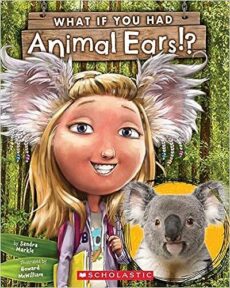
This delightful series invites children to learn about animal adaptations and how they help animals thrive, and then to imagine what they could do if they had those body parts. Informative text and humorous illustrations will make these books favorites of young children.
What If You Had Animal Feet?
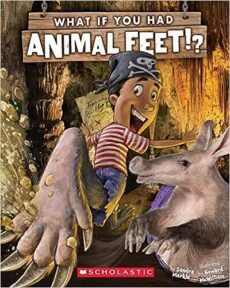
This delightful series invites children to learn about animal adaptations and how they help animals thrive, and then to imagine what they could do if they had those body parts. Informative text and humorous illustrations will make these books favorites of young children.
What If You Had Animal Hair?
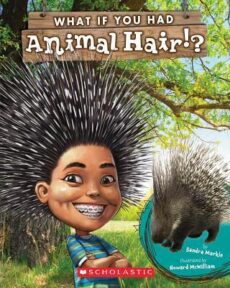
This delightful series invites children to learn about animal adaptations and how they help animals thrive, and then to imagine what they could do if they had those body parts. Informative text and humorous illustrations will make these books favorites of young children.
What If You Had An Animal Nose?
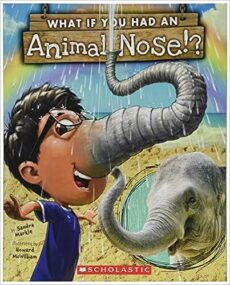
This delightful series invites children to learn about animal adaptations and how they help animals thrive, and then to imagine what they could do if they had those body parts. Informative text and humorous illustrations will make these books favorites of young children.
Animal Adaptations
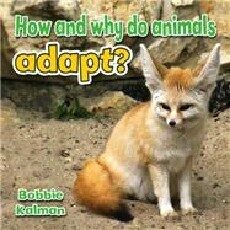
In order to survive, animals must adapt. This fact-filled book demonstrates how changes can happen over time in an animal's body or in its behaviors, due to climate changes, habitat changes, or altered defensive needs.
K101 Hidden Animals
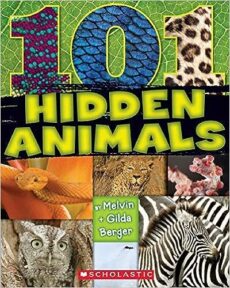
These two books introduce some of the most amazing creatures in nature. Hidden Animals features full-color photos of camouflaged animals blending into their surroundings, while Animal Super Powers focuses on extraordinary means of self-protection and obtaining food. Learn how and why these animals have developed these adaptations.
101 Animal Super Powers
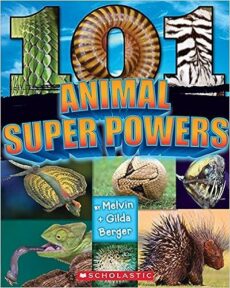
These two books introduce some of the most amazing creatures in nature. Hidden Animals features full-color photos of camouflaged animals blending into their surroundings, while Animal Super Powers focuses on extraordinary means of self-protection and obtaining food. Learn how and why these animals have developed these adaptations.
Showdown: Animal Defenses
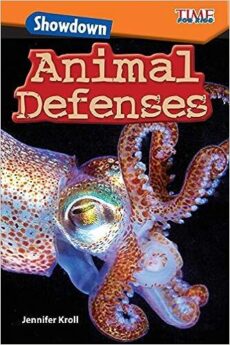
Defense adaptations include changing size or shape, camouflage, protective coverings, and group living. Designed to develop nonfiction literacy skills, this standards-aligned text includes glossary, index, table of contents, readers' guide, culminating activities, and additional resources.
Adaptation and Survival

The key concepts of physical and behavioral adaptation are explained through discussion of great white sharks' camouflage, giraffes' long tongues, whales' migration, and more. A discussion of the challenges associated with changing environments is also included, along with a hands-on project to investigate environmental adaptation.
Camouflage and Mimicry: Animal Weapons and Defenses
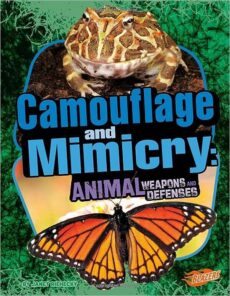
A harmless animal can frighten predators away by appearing dangerous. A dangerous animal can lure prey by appearing harmless. Both predator and prey can blend in with their surroundings to avoid detection. This book explores the adaptations of appearance that allow animals to be successful at hunting or hiding.
Outrageous Animal Adaptations: From Big-Eared Bats to Frill-Necked Lizards

Whether to avoid predators, to stalk prey, or to withstand extreme temperatures, Earth's creatures have some "outrageous" adaptations for survival. This book highlights some of the most amazing: a fish that walks on land, a vampire squid, a frog that makes its own sunscreen, a spider with giant jaws. These and other creatures show evolution and adaptation at work. Full taxonomic classifications for each animal are given, along with side notes, photos, diagrams and suggestions for further study.
